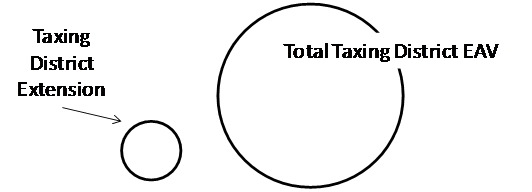September 14, 2011
The Cook County Treasurer’s Office has announced that the second installment of 2010 property taxes is expected to be due in the first week of November. The exact date will not be known until the Cook County Clerk publishes the new composite tax rates later in September. The Treasurer needs the new tax rates in order to send out the second installment tax bills.
The composite property tax rate for the majority of properties in the City of Chicago was 4.627% in tax year 2009. The rate has fallen by more than 50% since tax year 1990 when it was 9.964%. This decline has occurred because the tax base (EAV) of the local governments that levy property taxes in Chicago has risen much faster than their tax extensions in the aggregate. Extensions have been limited both by voluntary actions of the governments and by the Property Tax Extension Limitation Law (PTELL, or “tax caps”) which took effect in tax year 1994 in Cook County.
Declining tax rates do not necessarily result in declining tax bills, however. As described on page 39 of the Civic Federation’s property tax extension primer, increases in an individual parcel’s EAV can offset decreases in the tax rate.
It is very difficult to predict whether the tax bill for an individual parcel will increase or decrease in the future due to the complex interactions of many moving parts in the Cook County property tax system.
There are two major factors that affect year-to-year changes in a property owner’s tax bill:
1) change in the property’s EAV as a percentage of the total EAV of each taxing district with jurisdiction over it; and

2) change in the size of taxing districts’ extensions relative to the total EAV under their jurisdiction.

Changes in EAV are a product of changes in assessed value (AV), the multiplier, and homeowner exemptions. The Civic Federation’s primer on the assessment process describes these three elements and their interaction. Change in an individual parcel’s EAV in relationship to the total EAV of a tax code is driven primarily by changes to AV and to a lesser extent by changes to homeowner exemptions, which reduce EAV.
For more information, read the Civic Federation’s updated primer on property tax extensions.
